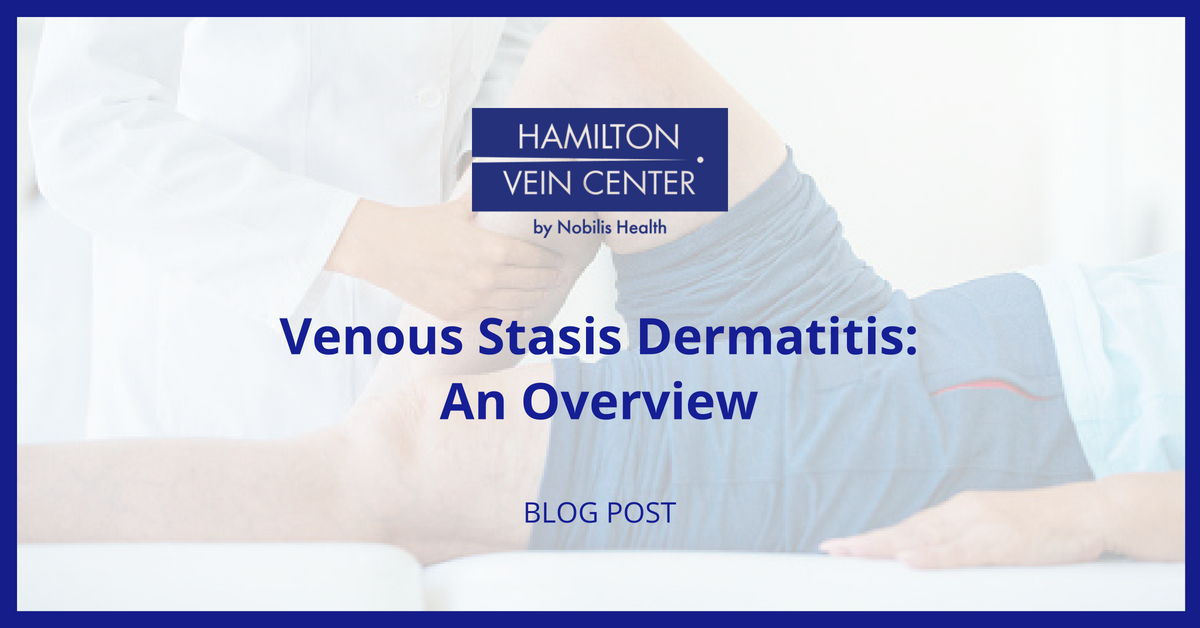Venous Stasis Dermatitis: An Overview

More Than a Cosmetic Issue
Venous stasis dermatitis is a condition that often goes undiagnosed, worsening in plain view. Characterized by intense skin discoloration, heaviness and tiredness, swelling, pain, and itching in the legs, the condition is often viewed as more of a cosmetic issue than a medical one. The core of it is more than skin-deep, however; it results from an underlying vein disorder, in which blood pools in the legs because it’s unable to get back to the heart.
The first step in taking on a condition like this is learning as much as you can about it. Let’s take a closer look at this disease.
Rating The Risk Factors
So how do you know if you have venous stasis dermatitis? Let’s first take a look at the risk factors for this condition:
- High blood pressure
- Obesity
- Pregnancy
- Being over 50 years old
- Kidney failure
- Being a woman
- Diagnosis of deep vein thrombosis (DVT)
- Injury in the lower legs
- Congestive heart failure
- Venous insufficiency
Ultimately, this disease is the result of poor circulation, so certain lifestyle factors can also play a part. Smokers, those who have to stand or sit for long periods of time, and those who don’t get enough exercise are at increased risk.
Advanced Cases & The Need For Treatment
So what happens if you don’t seek out treatment? Alongside the discoloration and discomfort caused by venous stasis dermatitis, untreated cases can lead to intense problems. Here’s a quick breakdown:
- Chronic Leg Ulcers: A condition in which ulcers form on the legs and do not heal.
- Osteomyelitis: Extreme cases lead to osteomyelitis, which is an infection of the bones.
- Bacterial Skin Infection: Since circulation problems characterize venous stasis dermatitis, there’s an increased risk of bacterial infections on the skin.
- Permanent Scarring: The inability to properly heal can also lead to permanent scars on the legs.
It’s therefore incumbent on people who think they have this condition to get medical care; the sooner you get the help you need, the better off you’ll be. But when should you call the doctor? Let’s take a look:
- Excessive pain in the legs
- Redness on the skin
- Open wounds or ulcers that refuse to heal
- Pus-like drainage
The good news is that this condition can be taken on medically; don’t hesitate taking the first step and reaching out to your doctor.
Treatment Approaches
As with any medical condition, preventative measures can be taken on to manage this condition. These include:
- Wearing compression stockings can help promote better circulation.
- Propping up legs when sitting helps move blood back to where it needs to go.
- Loose-fitting clothes can help ensure skin isn’t as irritated.
- Breaking up long periods of sitting or standing.
Of course, cases can advance despite these efforts, so let’s take a look at how venous stasis dermatitis is medically treated:
- Medicated ointments can help with the itchiness and dryness of the skin.
- Antibiotics may be necessary to take on infections.
- Steroids and antihistamines may be prescribed to help manage symptoms.
- Vein treatments such as sclerotherapy, radiofrequency ablation (RFA), or others will go after the diseased veins that are at the core of the problem.
There’s no reason not to treat this condition; outcomes are overwhelmingly positive for those that get timely care.
A Commitment to Step Forward
With the many responsibilities you have—caring for your kids if you’re a parent, work commitments, maintaining your home—it’s all too easy to neglect your health. This can especially be the case for conditions that don’t seem serious like venous stasis dermatitis. Don’t forget about your needs, and don’t let conditions like this get worse. Seeking out treatment will be the first step you take towards better living.
If you think you have venous stasis dermatitis or another diseased vein condition, the team at Hamilton Vein Center can help. Employing the latest in treatment techniques and technologies, these experts at their Texas-based outpatient clinics have helped countless people achieve better outcomes. Learn more about what they do by calling their Houston office at (281) 565-0033, the Austin clinic (512) 551-1403, or San Antonio at (210) 504-4304 today!